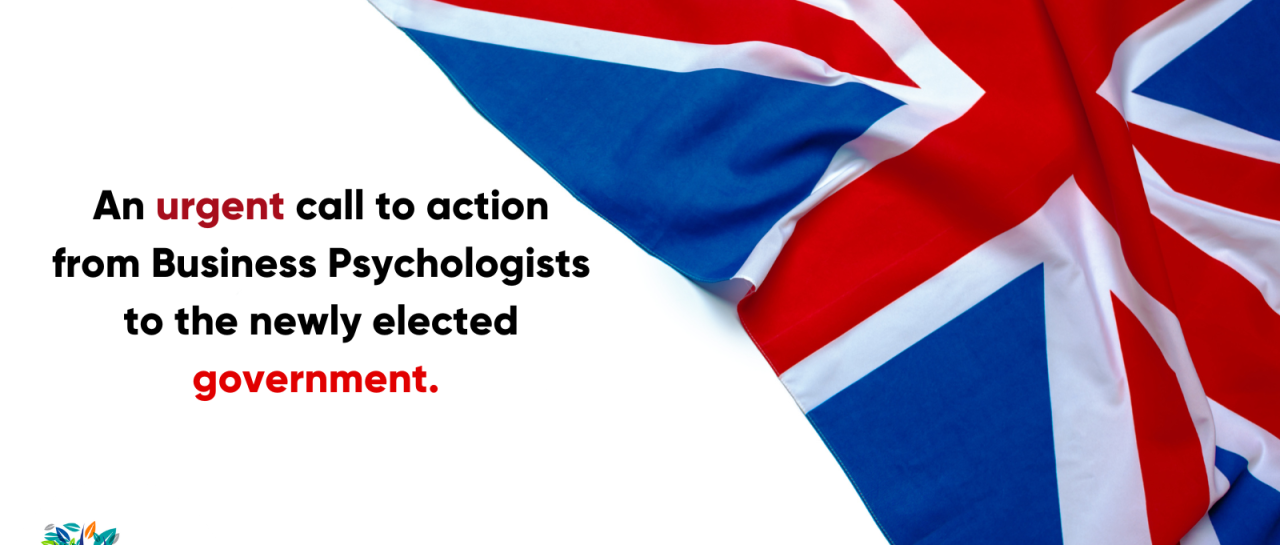Authored by Certified Business Psychologist Laura Howard. Certified Business Psychologist, Laura Howard, reflects on the webinar she recently delivered to ABP members. Below she outlines the main findings of her published research uncovering systematic barriers women face when being authentic as leaders. Importantly, she gives…

A Consumer Psychology Expert’s Guide for Retailers
Christopher Gray, Psy.D. Founder & CEO Buycology
“In these uncertain times … “
It’s a phrase used so many times since the early days of the coronavirus pandemic, that is has become a cliché, particularly in the marketing world. However, clichés are clichés for a reason. The “uncertain times” cliché speaks to a collective sense of fear and anxiety, related not only to the virus, itself, but also to the widespread social and economic disruption it has caused throughout the world. Suddenly, many of our most ordinary activities — going to work, sending kids to school, meeting with friends — have become fraught with danger, while many of our favorite shops and restaurants have been closed for months, putting their futures at risk. Even as many begin to reopen, they face apprehensive consumers who have shifted much of their buying to online retailers and delivery services, and who may be hesitant to venture back to physical stores. These drastic disruptions have left many retailers and industry experts contemplating the long-term impact on consumer psychology and behavior and questioning whether shoppers will return to physical shops at all. Uncertain times, indeed.
As a former couples therapist with more than twenty years of experience in retail strategy, I encourage my clients to focus on continuously growing their customer relationships as the foundation for long-term success, especially in times of rapid change. Time and time again, I’ve found that the stronger the engagement with customers, the better able retailers and brands are to understand, anticipate, and meet their shifting needs. And in return, customers reward them with more visits, increased sales, and positive word of mouth to friends, family, and social media.
Trust lies at the heart of healthy relationships, and consumer trust is the foundation for every brand, from Purell to Prada. As with any relationship, broken trust between brands (retailers) and their consumers must be repaired to keep the connection intact. Over several months, fears of contagion and extended closures have undermined consumers’ trust in retailers at a very basic level. Though not their fault, the burden of repairing this breach of trust lies with retailers. The actions they take now will impact customers’ perceptions for years to come. As shops and restaurants welcome customers back, here are a few suggestions for restoring trust and rebuilding customer relationships.
Put Safety Front and Center
First and foremost, retailers must quickly and clearly demonstrate their commitment to a safe and healthy shopping environment. Safety concerns will be at the front of everyone’s minds as businesses reopen.
Shoppers are likely to feel anxious as they enter stores and to be vigilant for any signs of potential health risks. If retailers are not able to put them at ease, little else will make a difference. Going back to Psychology 101 and Maslow’s Hierarchy of Needs, when safety and security are in question, it’s difficult to focus on other, higher level needs. People must know they’ll be safe before, during, and after visiting a retail space to fully engage in shopping activity. Anxiety and fear are not conducive to a positive shopping experience and often lead to avoidance, abandoned trips, less time in stores, reduced spending, and less desire to return.
Retailers may feel like they are going overboard in showcasing their safety measures, but it is important to remember that context has changed with the pandemic. Shoppers’ safety standards are much higher, and if safety is in question, they are much less likely to give retailers the benefit of the doubt. They will need to see it, hear it, smell it, and feel it. The goal is to prevent transmission as much as possible but also to demonstrate a commitment to customer and employee safety at every step of the shopping process.
- Consult the British Retail Consortium, including best practices for reopening.
- Create or reassess shopper journeys to identify risks, evaluate safety measures, and ensure clear communication at each customer touchpoint.
- Use websites, email, social media, and other marketing channels to keep customers informed of steps being taken to protect their health, as well as expectations for shoppers (e.g., social distancing, wearing masks, etc. ).
- Highlight adherence to the most current safety guidelines from Health Care England, the Center for Disease Control, or other official agencies, both in store and and out.
- Signal safety throughout the store with environmental cues that reassure customers and enable them to focus on enjoying the shopping experience. These may include signage, imagery, displays, floor markings for social distancing, announcements, masks, disinfectant wipes, hand sanitizers, or other cues.
- Collaborate with employees to ensure they feel safe, are adhering to safety protocols, and are modeling safe behavior to customers.
Communicate Clearly and Consistently
As with any relationship, communication is vital to building a positive, mutually beneficial relationship between retailers and their customers. As COVID-19 cases fluctuate and communities around the world wrestle with easing restrictions and balancing public safety, economic health, and civil liberties, consumers will continue to experience uncertainty for the foreseeable future — there’s that word again. In the upcoming months, it is especially important that retailers be clear and consistent in their communications with customers, both in store and out. Many weeks of retail closures, suspended services, product outages, purchase limits, long lines, fluctuating hours of operation, shifting social norms, and inconsistent shopping experiences have left them not only feeling uncertain about shopping, but also confused, anxious, and frustrated. Left unresolved, these feeling states can have a negative impact on purchase behavior, reducing desire to shop, as well as shopping time, basket spend, openness to suggestions, and willingness to return. As a rule, shoppers left confused or frustrated aren’t buyers. On the other hand, this provides retailers a strategic opportunity to add value and grow customer relationships with messaging that meets their needs. Anxious customers will appreciate retailers that proactively address their concerns and provide updated information regarding hours, product and service availability, safety measures, customer expectations (e.g., masks or limited group size), staff updates, or other questions they may have. In doing so, retailers are also reducing barriers that may prevent customers from visiting, shopping, and buying in their stores.
- Use shopper journey maps to locate communication opportunities, identify needs, address key concerns, and overcome barriers to purchase.
- Don’t leave customers guessing. Be sure to cover the basics (e.g., hours) and update frequently.
- Avoid misunderstandings. Clearly state expectations of shoppers, such as temperature checks, social distancing, masks, or limiting customers in store.
- Check in frequently with staff to ensure understanding and alignment with messaging expectations.
- Evaluate customer messages against the Five Cs: Messages should be clear, concise, consistent, compelling, and credible.
Demonstrate Listening Skills
Over the years, many lessons from my time as a therapist have proven useful for creating customer engagement strategies. Chief among them is the idea that when building trust, it’s not enough to simply be a good listener, you must also demonstrate that you are a good listener. At retail, this means creating experiences and communications that result in customers feeling understood and valued to such a degree that they are drawn to them. It’s very difficult to provide value to someone who is a mystery, which is why customer insights are so important. This level of insight requires more than surveys and datapoints; it also requires curiosity, keen observation, and strong listening skills. The goal is to reflect these insights back to the customer through retail elements, such as signage, displays, product and service mix, environmental design, customer service, and marketing messages. Well-executed, this results in highly relevant and effective customer experiences that draw attention, compel engagement, and motivate purchase. Ultimately, customers judge how well retailers understand and value them with their buying behavior.
- Clearly identify target customers and capture what you know about them; create profiles that include demographics, preferences, needs, aspirations, challenges, and barriers to purchase. Outline what you know and what you need to find out.
- Draw on the observations and experience of sales teams and other personnel who engage frequently with customers. They can be good sources of insight.
- Request feedback from customers through interviews, surveys, social media, or even shop-alongs.
- Consider the return on investment for a formal customer research project, which may involve third party experts.
- Use a shopper journey map to evaluate customer touchpoints for relevance, engagement, and value.
Show Customers Respect
Customer trust must be constantly earned and maintained or it is lost. Many years of trust can be lost with a single misguided action. Retailers and brands must realize they are at a crossroads with consumers, whose lives and shopping habits have been disrupted. The actions they take, today, will have a lasting impact on customers’ perceptions and preferences. For some, it may seem tempting to boost short-term sales by leveraging anxiety and fear, but that would be a strategic miscalculation. Consumers are very sensitive to manipulation, especially in times of uncertainty when high value is placed on feeling in-control. When consumers feel coerced or disrespected, trust is broken, and they respond with anger and avoidance. No retailer or brand can afford to appear out-of-touch, indifferent, or manipulative, especially now. They can avoid this fate by focusing on adding value for their customers and being genuinely helpful.
- Approach communications with humility and respect for customers’ needs and priorities – acknowledge challenges, normalize feelings, be trustworthy, and add value.
- Be gentle. Aggressive, business-as-usual sales and promotions may seem irrelevant, tone-deaf, or even predatory to anxious customers.
- Tailor promotions to the challenges and causes customers care about right now.
- Flex to customers’ changing needs with options such as alternative hours, private appointments, curbside sales, virtual events, or other creative and helpful solutions.
- Be authentic and transparent. Share what you can about challenges and difficult decisions but also hope and positive developments. Customers value companies that are straightforward and real with them.
In these uncertain times, what is certain is that no one can predict exactly how long-term shopping behavior will change as a result of the crises and unrest of 2020. There is no doubt that brands and retailers face many tough challenges in the weeks and months ahead. However, long-term consumer sentiment and behavior is still evolving and hinges on the ability of brands and retailers to prove their value as the pandemic and its aftermath continue to unfold. Those that do will be well-positioned to thrive when consumers are ready to spend again.



